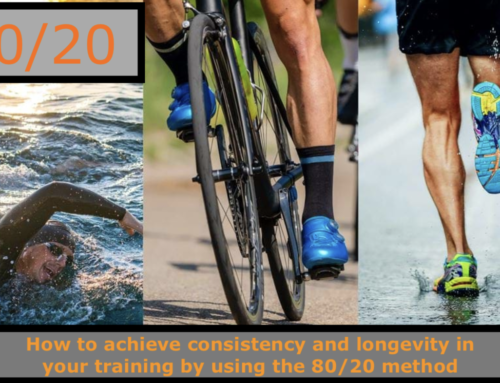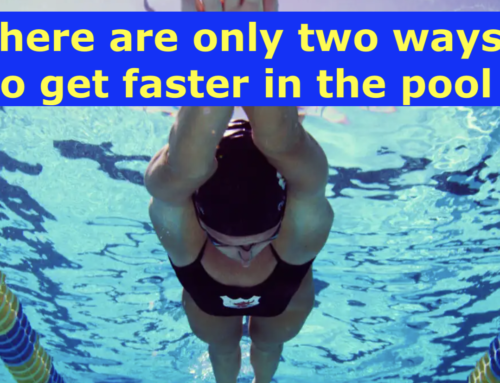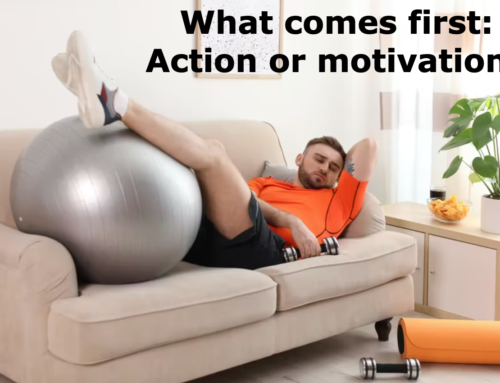How can you invest in your own physical pension, and what is it?
Growing up my father bored me to death about how important it was to save for the later stages of my life. He always talked about how much he put into his pension. As soon as I got my first job he wanted to know if any of my salary was being paid directly into a pension. It wasn’t. Of course, that meant he introduced me to his financial advisor so we could “have a chat about money”. Who wants to hear that at 22? I just wanted enough money to have fun. Tomorrow could wait. Of course, now I’m approaching my 60th birthday, I realise that having a pension might have been a good idea (P.S. – if you are a pensions advisor, don’t panic. I’m well sorted, thank you!)
What I’m talking about is the fiscal pension and I’m certain that most people know what this is, how it works, and why you should have one. In case you don’t, here are the basics as I understand them:
The Fiscal Pension
- The sooner you start, the bigger the sum – using the principles of compound interest and maximising all the taxable benefits, starting as early as possible produces the best results and may even mean you can retire earlier than most.
- Pay a small amount each month – the monthly contributions don’t have to be huge, but they do have to be consistent. The best approach may be to work out how much you think you’ll need to live on at your chosen retirement age (of course a lot depends upon your chosen standard of living) and work backward to find your monthly contribution.
- Better enjoyment of later years – The more you have in the bank, the better your standard of living and more choices on how you spend that money. If you only have £5, then your choice of where to have dinner is limited. With £100 your choice is much wider and varied.
- Keep it simple and aim for steady returns in the long term – there are some highly complex (and complicated) financial instruments out there that are supposed to help you maximise your gains. As a Yorkshireman, I’m programmed to believe that if it seems too good to be true it probably is. So, I’m not after a quick fix or a huge return in a short term. For me, the best approach is slow, simple, and steady.
The Physical Pension
What most people ignore (until such time as it becomes really f*****g obvious) is that in order to maximise our enjoyment of the fiscal pension, it’s just as important to make regular payments into our physical pension.
Think about this for a moment. Let’s say you get to that planned retirement age and you have the nest egg you’ve always dreamed of. You also have a bucket list of places you want to visit and activities you want to do. Except at the age of 55 (if you’re lucky) or more likely 60-65, you don’t have either the fitness or health to be able to enjoy them exactly as you had dreamed. In fact, you find that more of your savings goes to pay for medical care than adventures.
This is the worst-case scenario and the chances are that you’re reading this because you’re connected with me somehow, which probably means you have some interest in your physical health. Most of the 50+ year olds that I work with are great at getting the cardiovascular work done. They swim, cycle, run, walk, etc. on a regular basis, so their heart and lungs are in great shape. But that’s only part of the puzzle.
In fact, the limiters to enjoying life in your 50’s 60’s and beyond are more to do with biomechanical deficiencies (tight neck & shoulder, painful lower back, sore knees) and metabolic disorders (Type 2 diabetes and heart disease). That’s where attention to mobility, strength, and daily nutrition has a positive impact. Ignoring these, yet doing lots of aerobic work, is like having a classic car and only taking care of the engine. If the bodywork is hanging off, you still can’t drive it properly. Hopefully, you can see where I’m coming from with this.
The physical pension is just as important as your fiscal pension and you can take care of it in just the same way.
- The sooner you start the better the long-term result – OK so you may be a bit behind with some of your payments now but starting at 50 can still have huge benefits for when you reach your 60’s. 10 years of eating better and stretching each day is better than continuing as you are.
- Consistent effort every day/week/month – You don’t need to make a huge change to your lifestyle. Little and often is fine.
- Doesn’t need to be a big effort – Start with 10 minutes per day. Heck, you can even break this down into 1-minute efforts every hour. If you have a desk job, make it a point to get away from a sitting position on a regular basis.
- More choice – If you have good health, fitness, and energy levels you’ll have more options available to you. But think on this…once your mobility goes and squeezing into small spaces becomes more of a challenge, that dream of buying a Lamborghini disappears if you can’t even get out of the driving seat.
- Enjoy later years – Let’s say you’re 55 now and you love being active. If you want to still be doing these things when you get to 75, what do you have to do now? If you start paying into that pension when you are 71 it’s probably too late to make much difference, you’ll just be holding back the tide. Acting now means you can make a real difference.
- Keep it simple for steady returns in the long-term – As I said earlier, I’m not a big believer in financial products that offer quick returns. If it seems too good to be true it probably is! The internet is full of charlatans offering to share their fitness secrets and hacks, but the truth is that there are no secrets or hacks. It’s just about hacking away every day. Get the basics right and you’ll be 90% of the way there.
Ok, I’ve given you some rough pointers here about the philosophy behind the idea of why a physical pension is just as important as a fiscal pension. You’re probably thinking, “OK, I get that but what exactly do I have to do each day?”
How?
The physical pension has 3 pillars: Exercise, nutrition, and recovery. Think of them as the legs of a stool. If just one of them is missing the stool isn’t just a bit wobbly, it falls over. Sure, if you have poor sleep but you exercise and eat well, your life isn’t going to end. However, it’s never going to be as good as it could be if you get all 3 of them in the sweet spot.
To make sure I don’t scare you off, I’m going to keep this simple.
Exercise
The World Health Organisation recommendation is to do at least 150–300 minutes of moderate-intensity aerobic physical activity per week; or at least 75–150 minutes of vigorous-intensity aerobic physical activity; or an equivalent combination of moderate- and vigorous-intensity activity throughout the week. Personally, I think we should all aim to be active every day and exercise at least 4-5 times/week. This is one way to invest in your physical pension.
Vigorous means getting your effort level up to a point where you can feel that your breathing is elevated, but you don’t need to get uncomfortably out of breath. If you train for any sport, you’re probably already doing this. If you’re just starting out, please note that brisk walking is perfect. You get all the fitness benefits without the added strain on your joints.
This covers the fitness of your heart and lungs, but fitness is so much more than that. The limiting factors that I observe daily tend to be more based on reduced or lack of mobility and reduced or lack of strength.
To improve mobility, one needs to invest in some sort of daily movement practice. The easiest of these is pilates or yoga. There are numerous online classes to follow if you can’t visit an in-person class. Yoga is a practice, NOT a performance. So, while you may think that you aren’t very good, there are no scores for who is best at a particular movement. If you are an athlete, then daily stretching should be part of your recovery process. I recommend 15 minutes for every 60 minutes of daily training.
Strength declines with age by about .5-1% per year and speeds up in the mid to late 50’s. Therefore, a regular strength routine is crucial if you wish to maintain a quality of life. It doesn’t need to be complicated and in fact, with the minimum of equipment, you can easily do this at home. Remembering that consistency is the key, 15-20 minutes, 3 times per week will be more than adequate (most people who boast of their 90’ gym session probably spend at least 60 minutes of their gym time chatting with other gym-goers, selecting music to play on Spotify, looking in the mirror and deciding which exercises to do next).
If you can learn some very basic movements, that’s all you need. If you aren’t sure then employ a trainer for a couple of sessions to make sure you have the right technique. As you get more confident, you can add in more exercises. Strength and mobility are key ways to invest in your physical pension.
Recovery
Sleep is the bedrock of all health. Failing to reach the minimum daily sleep requirement can lead to all sorts of health issues. It’s true that sleep need is individual but the number of people who can successfully navigate the demands of life on 4 hours per night is very small in number (less than 1%). For just about all of us, aiming for a sleep opportunity of 8 hours/night is the right place to start. For those who feel sleep is a waste of time, be assured that when you sleep well, productivity, mental acuity, adaptation to exercise, and nutritional choices are all much better. In fact, for those who train regularly, it’s worth knowing that deep sleep is when 95% of your daily human growth hormone production occurs. HGH is vital for muscle repair! Sleep is a key way to invest in your physical pension.
Getting better sleep isn’t that difficult for most people. In fact, the most challenging part is getting into the habit of sleeping better. Areas to target are:
- Sleep environment – creating a bedroom that’s just for sleep and sex (no electronics), blackout blinds and/or curtains, evening temperature of 15-16C
- Consistency – aim to turn the lights out and wake up at the same time each night
- Post sleep routine – aim to get sunlight (or daylight) directly into your eyes in the morning to start the production of serotonin
- Pre-sleep routine – eat your final meal 2-3 hours before bedtime, avoid alcohol immediately before you retire, disconnect from phone and computer 2-3 hours before bed
Sleep isn’t the only way to recover. Our 21st-century lifestyles mean that we’re always connected and probably never let go. Time-saving gadgets don’t mean that we have more time on our hands. It means we fill our time with more activities. Sometimes it’s good to just say ‘No’. Having an hour or so each day when we disconnect allows us to go from the fight or flight mode when we are busy to rest and digest when we’re relaxing. Meditating is another way to invest in your physical pension. It’s a great way to give your body some space. And you don’t need to do it in the traditional sense. Any non-work activity where you’re totally focussed (no distractions like music in your ears) will do. For example, you could just walk in the woods for 30 minutes and absorb the sounds of nature.
Nutrition
What you eat plays a key part in how you invest in your physical pension. But discussing nutrition and which philosophy you should follow is like religion and politics. Polarised and prone to huge arguments. To avoid that I’m going to suggest that if you can find an eating style that works for you, that’s great. There are plenty to choose from including – Paleo, keto, vegetarian, vegan, carnivore, low carb/high fat, high carb/low fat, Atkins, Zone, etc.
However, there are some basic principles which I think everyone agrees on:
- Eat real food prepared by yourself
- Carbs, fat, and protein are all vital for human function
- Reduce or eliminate your intake of refined sugars and processed foods
- Seek variety in the foods you eat. If you’re a meat-eater, try different cuts and ‘nose to tail’. If you eat veggies then aim for at least 30 different fruits, nuts, and veggies each week.
- You don’t have to be perfect. Pizza, ice cream, or cake are fine in small amounts. Think 90/10 (eat clean 90% of the time). If you can maintain that, you’re doing a good job.
Summary
If you’ve saved for years to build a big pension pot, then the physical pension is a critical part of this puzzle. But if you don’t currently work out on a regular basis, I’m not suggesting that you need to become a fitness freak. However, showing more love to your body will bring huge rewards as you get older. In fact, the returns when you invest in your physical pension will be far higher than any financial gains you’ll make from investing your money.
For those readers who already train for triathlon or any other endurance event, you already have a good engine (heart & lungs). But that’s like having a car with a good engine and poor bodywork. You need to pay attention to all aspects of your body. This includes mobility, strength, and the fuel that you put into it daily. It doesn’t need to take much of your day and it certainly doesn’t need to be complicated. Just follow the simple rules above and develop good daily habits. These are some of the key ways that you can invest in your physical pension, and ensure that you can fully enjoy your hard-earned fiscal pension when the time comes!
To find out more about Simon’s coaching services, please click here. To purchase Simon’s e-book, How to be a High Performance Human, please click here.







Leave A Comment